-
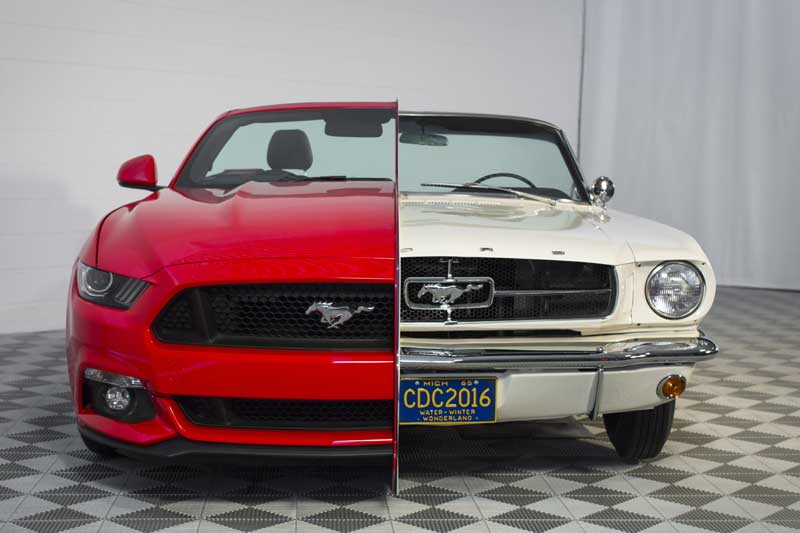
With the latest-generation Ford Mustang to be launched in India shortly, we bring to you a timeline of this icon’s history. Tracing the key developments through a history of more than 50 years, we tell you what made the Mustang an Icon. Surprisingly at one pint of its life, the Mustang was focused on fuel-efficiency than performance! We’re scheduled to drive the new Ford Mustang at the Buddh International Circuit tomorrow so stay connected to us through our Twitter handle @FinancialXpress
-
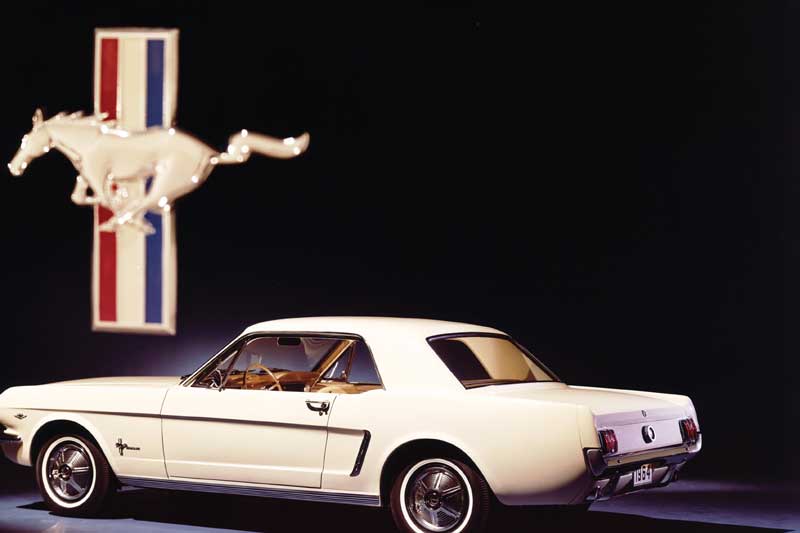
March 1964: Born out of the vision of seating four, weighing less than 1,134 kg, less than 180 inches long and having a floor-mounted shifter, the first Ford Mustang rolled off the assembly line in this month. Since the Mustang shared components with other Ford models, it was easier to offer customisation at a lesser price. It was this ability to customise the Mustang, which saw three engines being offered at a time, one engine was the norm for a model. Essentially, one could have a faster, more comfortable or a basic one to just get around. Ford advertised the Mustang as “The car to be designed by you”, and eventually, Ford sold 1.8 million of them in just 18 months!</br><br> 1965: While the Mustang range didn’t undergo any radical changes in 1965, the introduction of a new fastback body type, which later became the foundation for Carrol Shelby’s GT350. The GT 350 was an instant icon with sporty styling and performance to match with 306 hp on offer, which was a lot by 1965 standards. The focus on performance was such that the GT 350 didn’t come with rear seats. The regular fastback model offered 271 hp, which was still a very healthy number for that time.Since then the Mustang went through a constant process of cosmetic and mechanical upgrades, which ensured the brand did not lose its popularity.
-
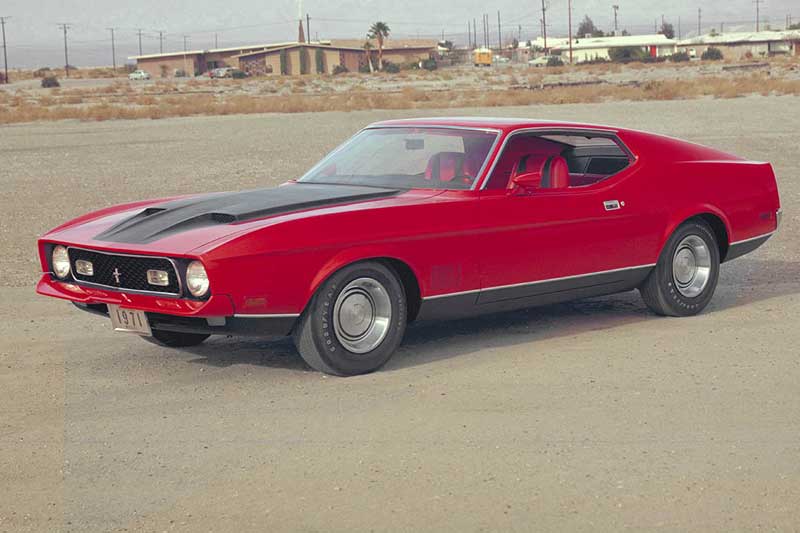
1971: It was until 1971 that the Mustang went through an extensive makeover. The 1971 Mustang was considerably larger than its predecessors, both in length and width. It was heavier as well and that called in for more powerful engines to push keep the performance quotient of the brand alive. Unfortunately, this was the time when people became familiar with the term “Oil Crisis” and rising insurance premiums and tightening safety regulations didn’t help Ford much. Eventually, Ford reversed their marketing strategy and promoted style, comfort and environmental-friendliness opposed to the original idea of performance. Over the next few years, changes were limited to interior features and exterior styling. Engine power however continued to witness a drop as Ford engineers found it hard to meet tightening emission norms without sacrificing power.
-
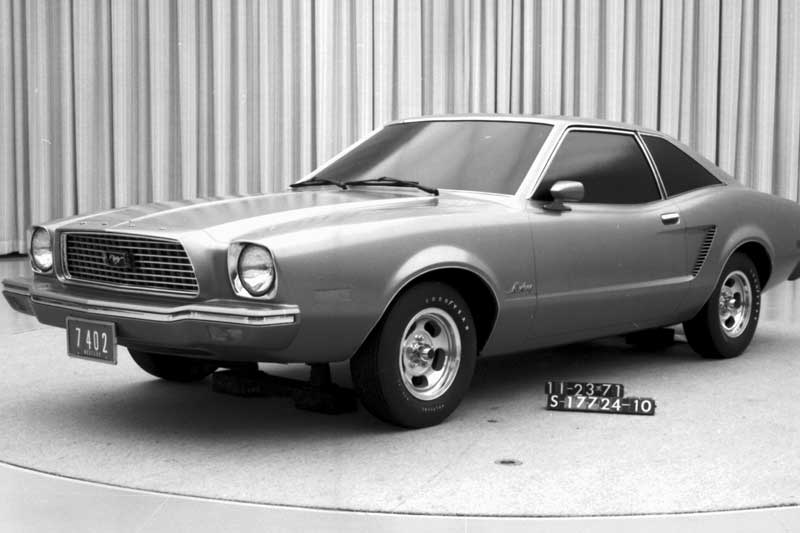
1974: Having spent some time as a heavy vehicle with underwhelming power, the 1974 Mustang was designed to be light. In line with this thought, the heavy V8s were done away with in favour of a 2.3 L 4-cyl engine and a 2.5 L V6 unit. Power output wasn’t impressive from these units at 102 and 119 hp, respectively. Combined with a chassis underpinned on the Ford Pinto, which was not even close to being a performance car simply worsened things. Sales were disappointing at 18,000 in the forts month compared to 22,000 on the first day of the last model. The saving grace here was the oil crisis, which did change the focus of customers from performance to fuel-economy.The Mustang II later continued to be inclined towards fuel-economy and negative economic environment meant that Mustang production in 1975 had to be cut in half, compared to 1974. Changes to styling and engines continued for the next few years without any success at recapturing the character the Mustang was born with. Things were about to change though and soon they did.
-
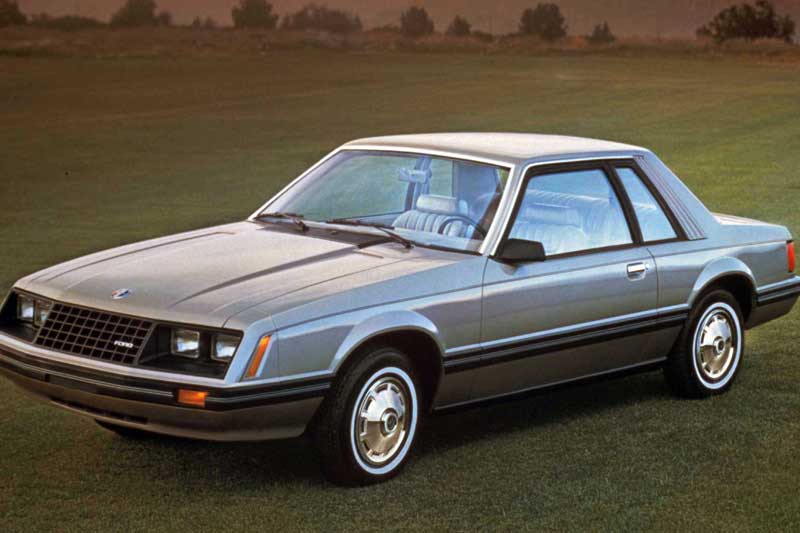
1979: Having passed through styling and mechanical changes through the years, the Mustang II was finally laid to rest in order to make way for the new Mustang. Based on the newly-developed Fox platform, this Mustang was longer than the outgoing model yet lighter. More importantly, this generation saw the introduction of turbocharging to the brand with a 2.3 L 4-cyl motor, developing 143 hp. The lag on the turbo motor however was high, making it cumbersome to drive. Again, minor changes continued through the next few years until 1981, when the turbocharged engine was pulled back due to reliability issues.
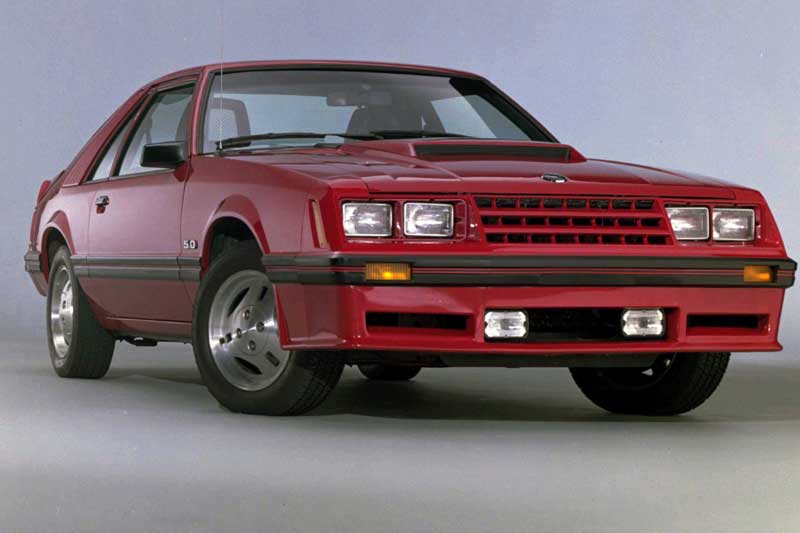
1982: Excitement seemed to be tagging back with the Mustang brand as Ford marketed the car saying “The Boss Is Back”! Named the Mustang GT, the new model was now powered by a 5 L High Output engine, developing 157 hp. In 1983, the convertible body style made it back to the Mustang range and the turbocharged engine was reintroduced, completely reworked though. The new turbocharged engine used electronic fuel injection for the first time, adding to the reliability. Power output went up to 145 hp and even for the 5 L engine, power was increased to 175 hp. Until 1985, the Mustang range underwent changes primarily aimed at improving reliability and comfort. In 1985, the 5 L V8 High Output engine was extensively worked upon and as a result, power output went up to 210 hp. A new turbocharged engine too was introduced, which now made a healthy 205 hp. -
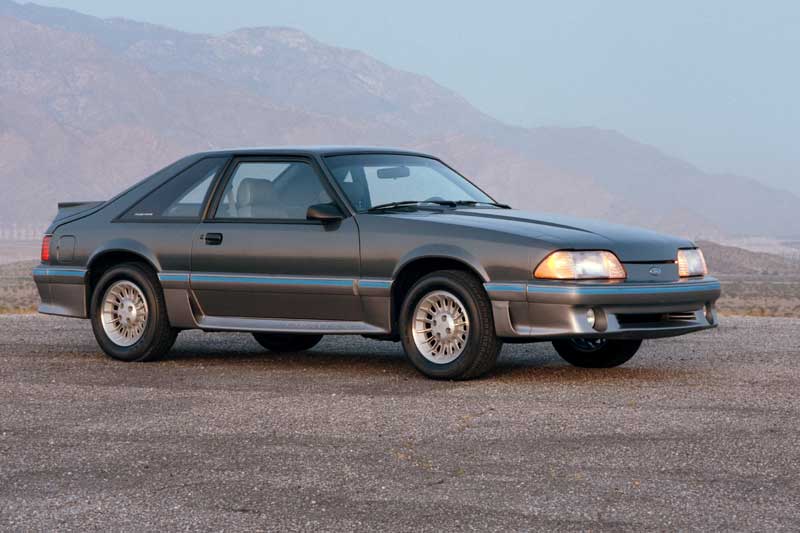
1987: In 1987, Ford tweaked the Mustang platform and carried on with minor changes to multiple vehicular areas. For various reasons, this platform stayed in service till 1994 with some limited editions being the highlight in terms of performance.
-
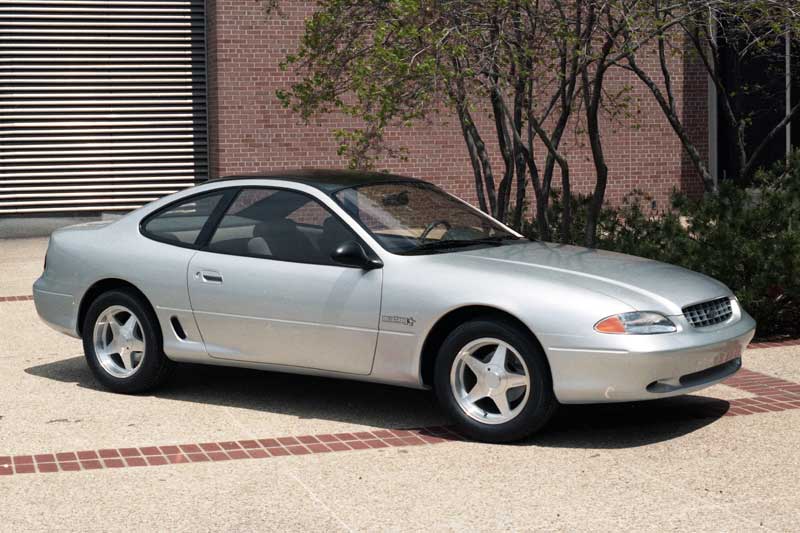
1994: The new Mustang now had an all-new body but was still based on the Fox platform, albeit an improved version of it. The engines this time made use of aluminium, translating into significant weight-loss. There was also a Cobra version on sale, which offered 245 hp from its 5 L V8 engine. This engine was eventually phased out in 1995 to make way for a 4.6 L single-overhead cam V8. This new engine was also available with higher aluminium content, making 305 hp output possible. Until 2001, evolutionary improvements took place in the powertrain,c hassis and interior domains.
-
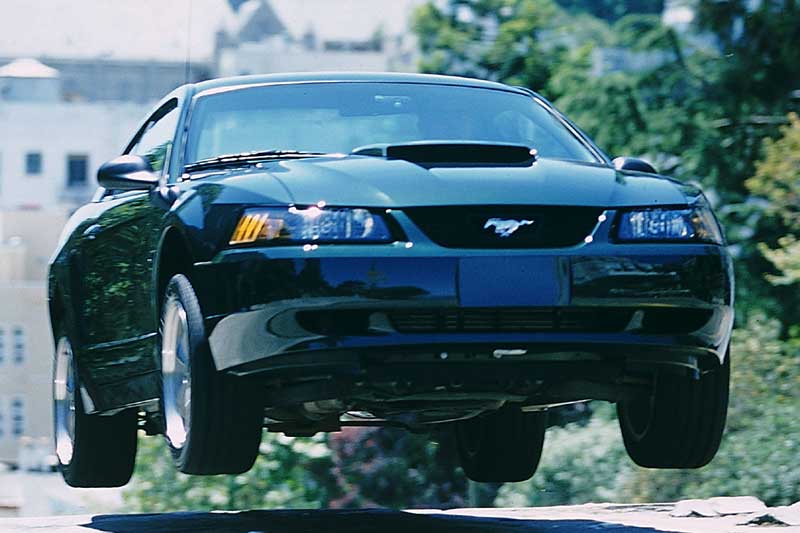
2001: This was the year when the iconic Bullitt edition of the Mustang GT was introduced. The car was designed keeping in mind the 1968 Mustang driven by Steve McQueen in the film Bullitt. This special edition car had a revised engine with 265 hp on pffer along with a lowered suspension, redesigned instrumentation and the upholstery and a sportier design. Once again incremental improvements to the model continued over the next few years.
-
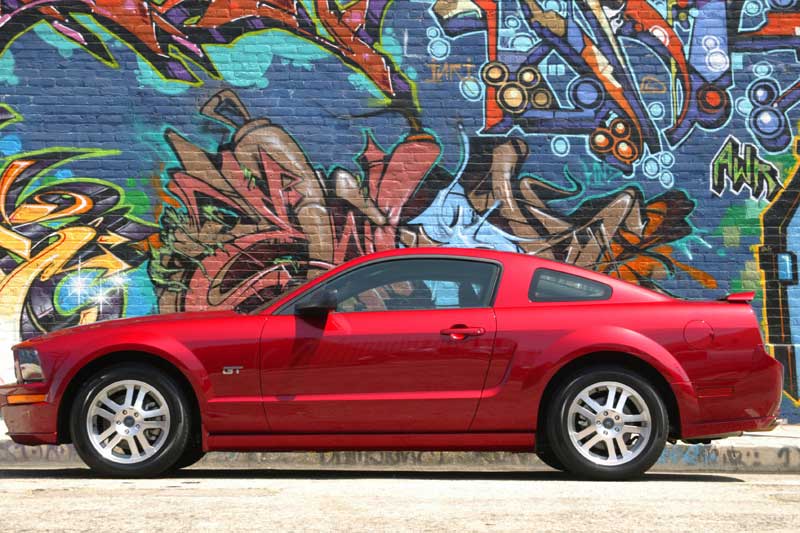
2005: In 2005, Ford introduced the all-new Mustang, based on an all-new platform. The exterior design was all-new and for the first time merged modern lines with retro appeal, keeping the iconic Mustang character alive. The least-powerful engine now produced a decent 210 hp and owing to newer manufacturing technology and advent of computers, the structural rigidity was a 100 % higher than its predecessor. Over the next decade or so, the Mustang continued to be upgraded in almost all key areas. Special editions such as Shelby and Boss continued to retain excitement within the Mustang brand until the next big upgrade.
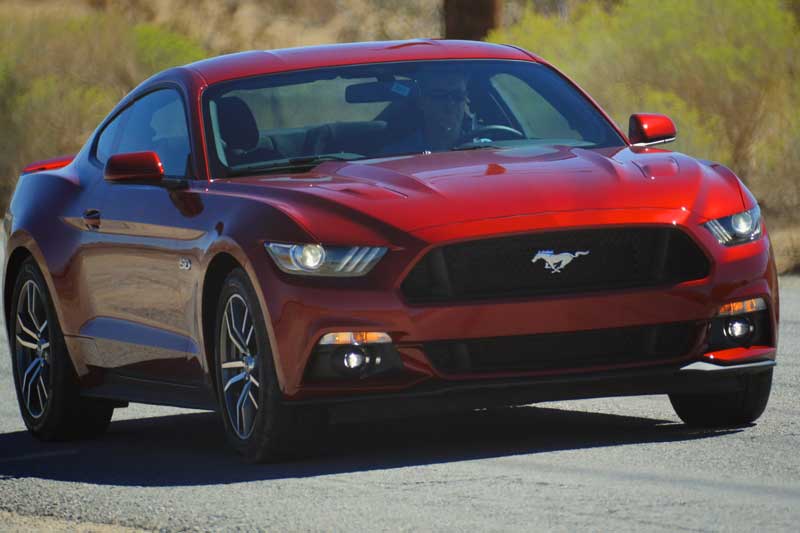
2015: The 6th generation Mustang went in production in the second half of 2014 at the Flat Rock plant in Michigan, USA. This was the greatest departure from earlier generations on technical grounds. The new Mustang for the first time had independent rear suspension as standard and was sold with the option of a 2.3 L EcoBoost engine, which was equipped with turbocharging and direct injection. In addition for the first time, Mustang was to be marketed and sold globally, which in simpler terms meant that for the first time, Ford began making right-hand drive Mustangs. It is this generation of the car that is slated for sale in India shortly and we’ll only get one engine for now since it’ll be the Mustang GT that will be sold here. Powering the GT is a 5 L Ti-VCT V8 engine, developing 395 hp and 515 Nm of torque. There’s the usual list of electronics too including ABS, drive modes, electronic stability control (ESC) and more. What matters though is that how all of these technologies work together in order to offer the experience promised by Ford. In case you’re wondering how much would it cost to own this iconic machine, we can only share our expectations since the car is yet to be launched. We expect it to be priced closer towards the Rs 60 lakh figure. Stay tuned for live updates tomorrow.
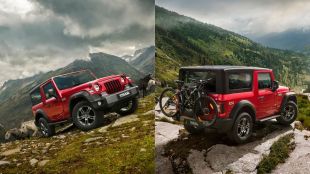
6 Photos




